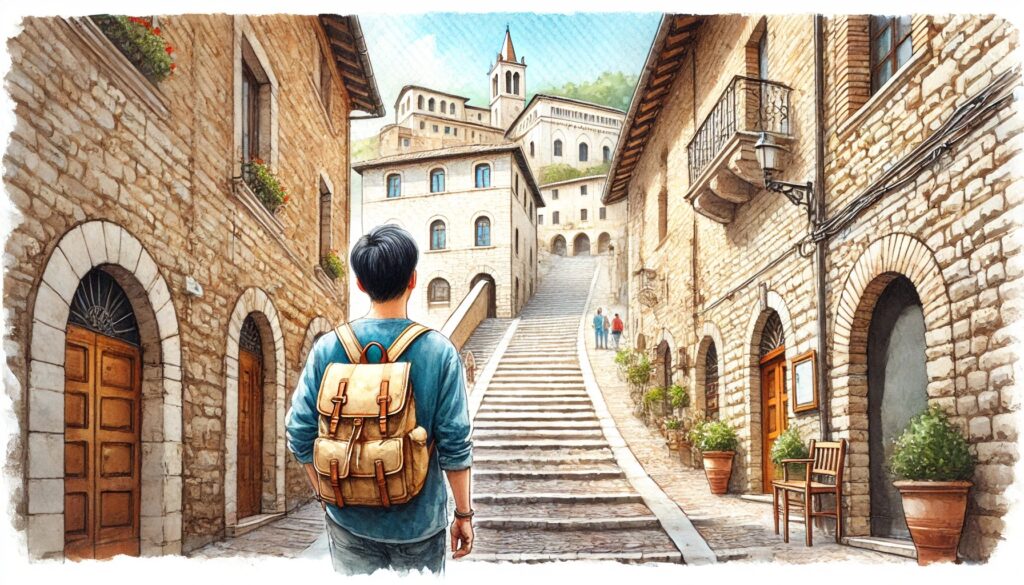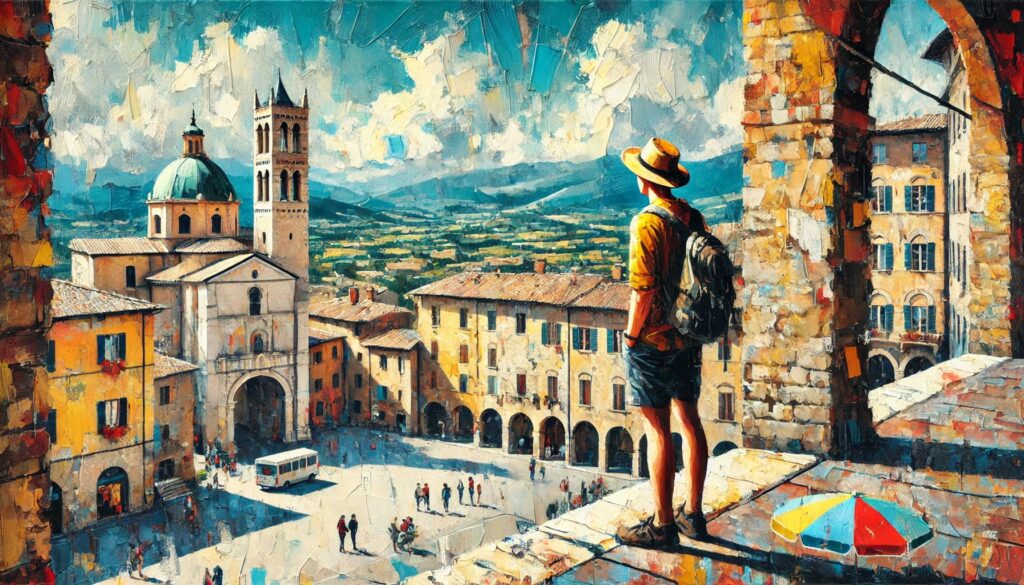ChatGPT:Gubbio is a medieval town in the Umbria region of Italy, known for its well-preserved historical architecture and scenic landscapes. Nestled on the slopes of Mount Ingino, it offers a picturesque view of the surrounding countryside. Gubbio’s history dates back to ancient times, with notable Roman ruins such as the Roman Theatre. The town is characterized by narrow, cobblestone streets, stone houses, and significant landmarks like the Palazzo dei Consoli and the Basilica of Sant’Ubaldo. Gubbio is also famous for the Festa dei Ceri, an annual festival held in May featuring a race of wooden “candles” carried through the streets.
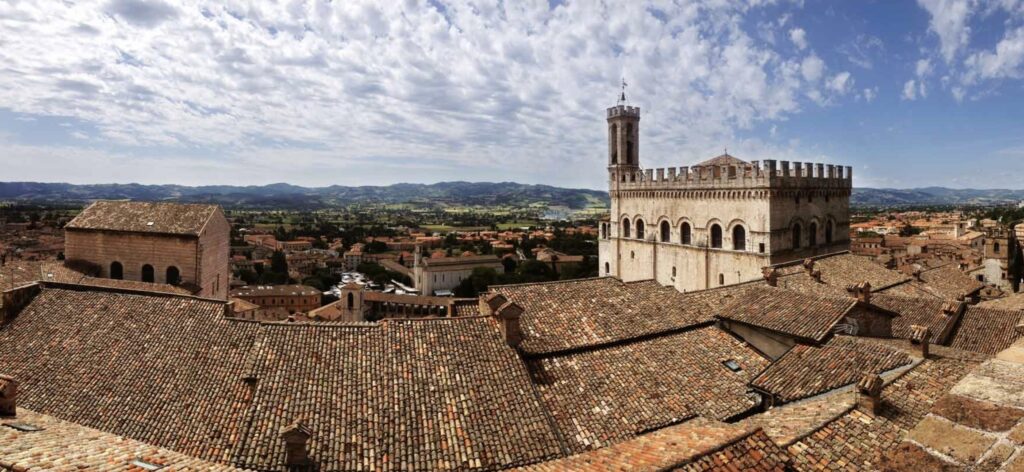
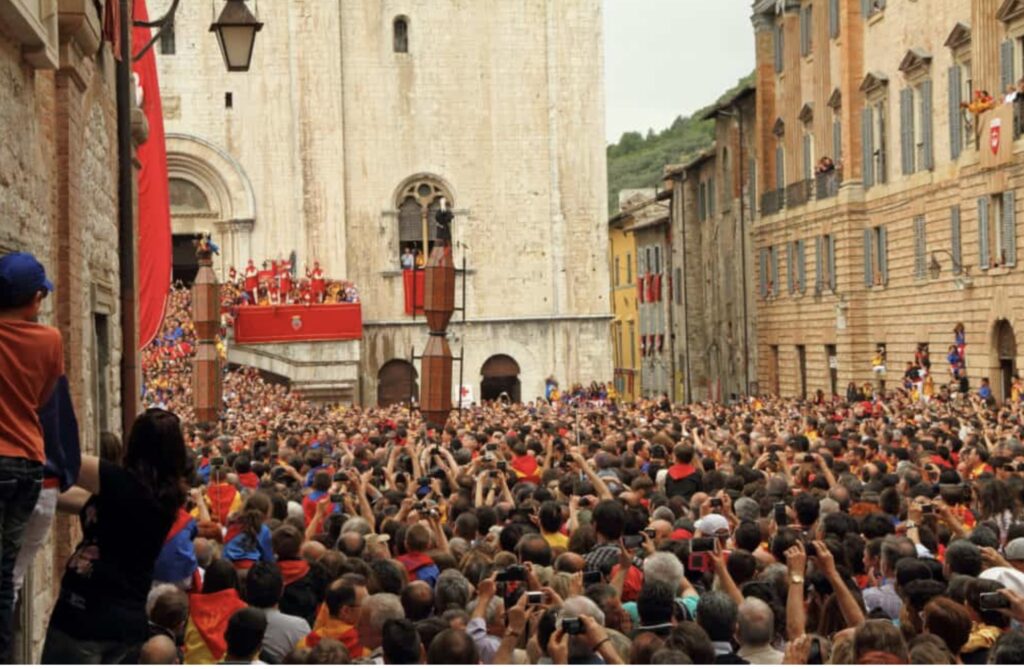
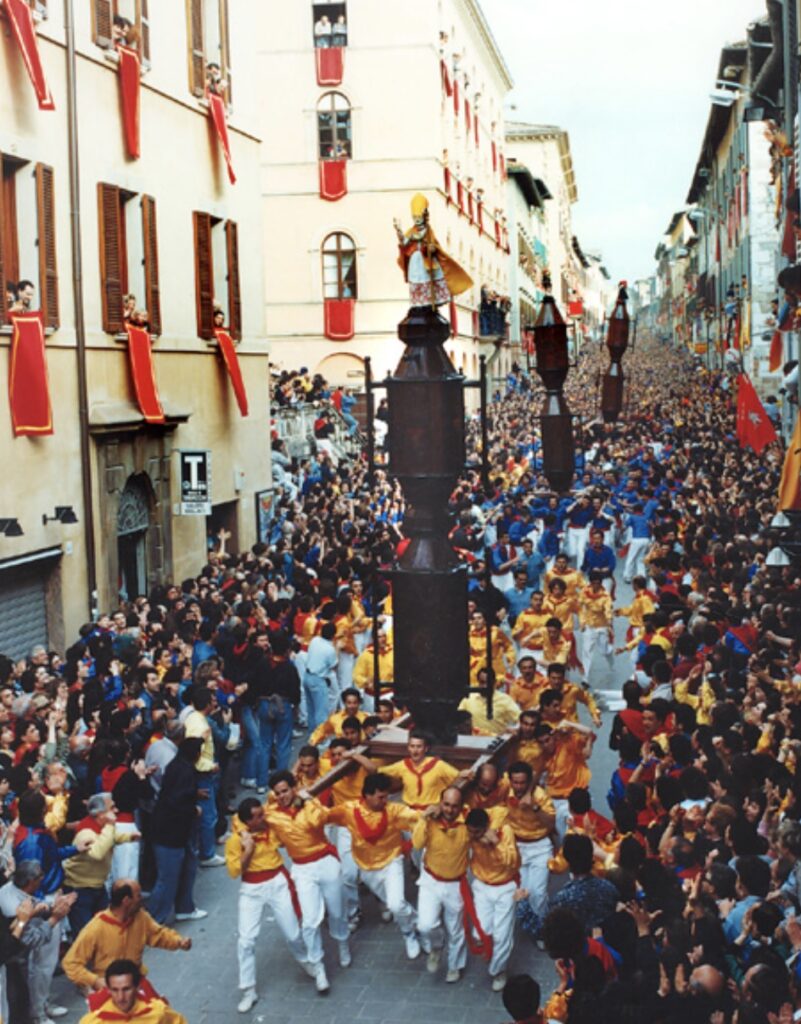
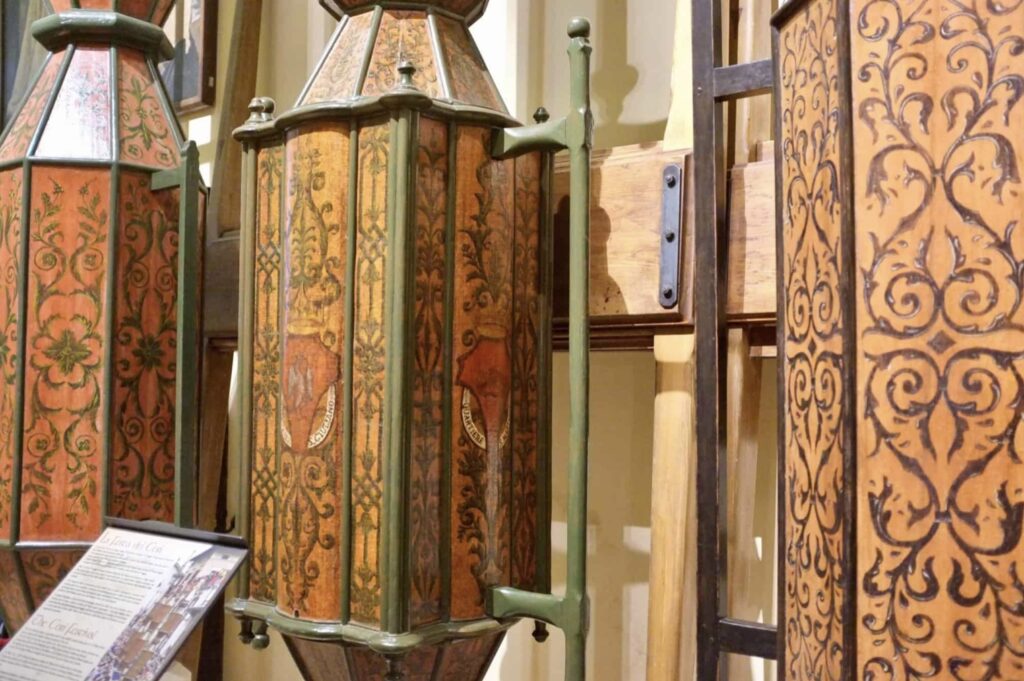
Gubbio’s history is rich and spans several millennia, reflecting a variety of cultural and political changes.
Ancient Period
- Pre-Roman Era: Gubbio, originally known as Iguvium, was a significant settlement of the Umbri, an ancient Italic people. The discovery of the Iguvine Tablets, bronze tablets inscribed with ritual texts in the Umbrian language, attests to its importance in ancient religious and civic life.
- Roman Era: Gubbio became a Roman municipium in the 3rd century BCE. It flourished under Roman rule, evidenced by the well-preserved Roman Theatre and other archaeological remains.
Medieval Period
- Early Middle Ages: After the fall of the Western Roman Empire, Gubbio experienced turmoil and decline, like much of Italy. It was eventually integrated into the Lombard Duchy of Spoleto.
- 11th-13th Centuries: Gubbio regained prominence in the Middle Ages as a free commune. The town expanded, and many of its iconic structures, such as the Palazzo dei Consoli and Palazzo Ducale, were built during this period. It became a Guelph stronghold, aligning with the Papal States against the Holy Roman Empire.
Renaissance to Early Modern Period
- 14th-16th Centuries: Gubbio’s wealth and influence grew, partly due to its thriving wool and pottery industries. In 1384, it was incorporated into the Duchy of Urbino. The town saw significant architectural development and artistic patronage, including works by artists like Gentile da Fabriano.
- 17th-18th Centuries: With the decline of the Duchy of Urbino and its annexation to the Papal States in 1624, Gubbio’s political importance waned. However, it remained an important local center of culture and religion.
Modern Period
- 19th Century: Gubbio, like much of Italy, was affected by the Napoleonic Wars and subsequent unification of Italy. It became part of the Kingdom of Italy in 1860.
- 20th Century to Present: Gubbio has maintained its historical charm and cultural heritage. Its medieval architecture and festivals, particularly the Festa dei Ceri, continue to draw visitors. The town has balanced modern development with the preservation of its historical character, making it a significant site for both tourism and local tradition.
Today, Gubbio is celebrated for its rich historical legacy, stunning architecture, and vibrant cultural life, offering a window into Italy’s diverse past.
Gubbio is renowned for its well-preserved historical monuments and tourist attractions, offering a deep dive into its rich cultural heritage. Here are some of the key sites:
- Palazzo dei Consoli: A majestic Gothic building housing the Civic Museum, which displays the Iguvine Tablets, medieval artifacts, and art.
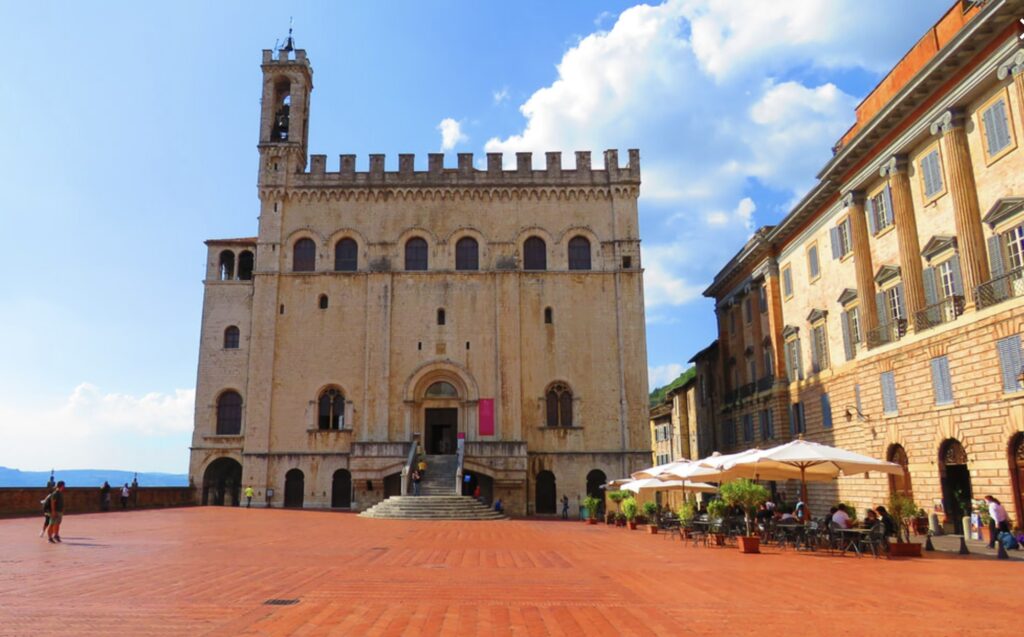
- Roman Theatre: An ancient Roman structure dating back to the 1st century BCE, providing a glimpse into Gubbio’s Roman past.
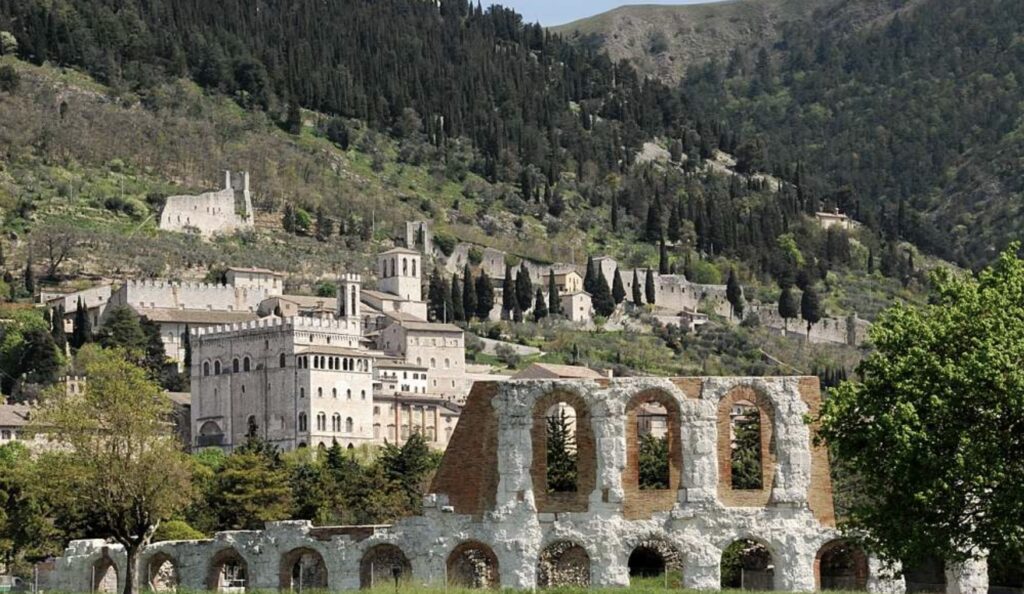
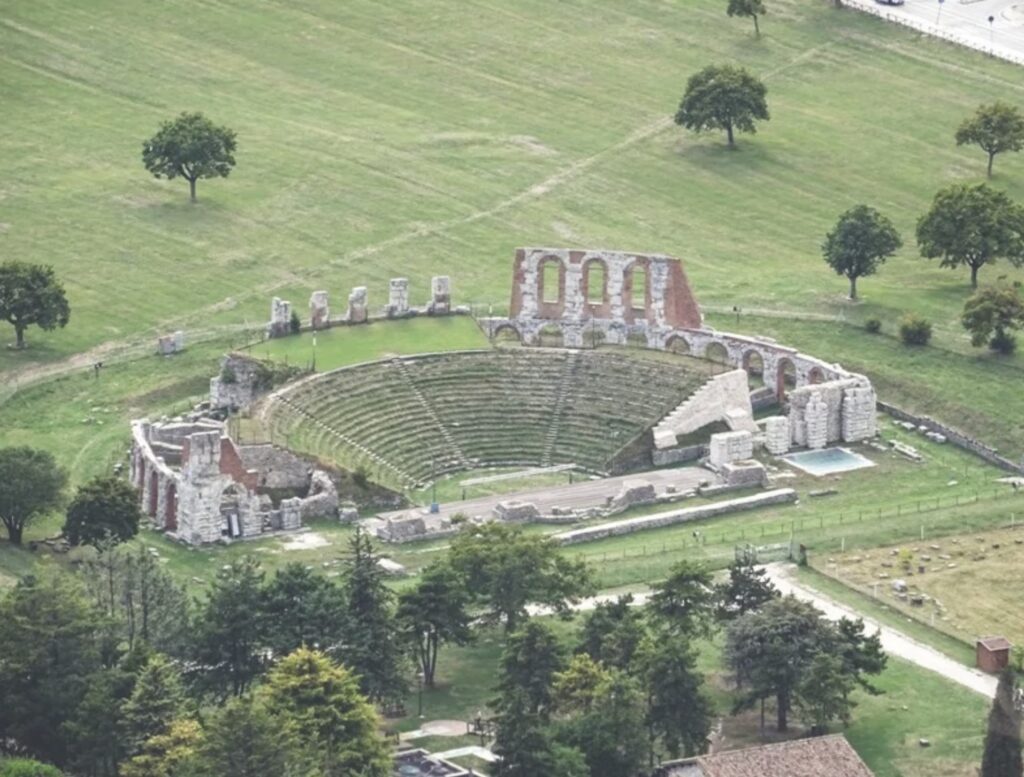
- Basilica of Sant’Ubaldo: Located on Mount Ingino, this basilica contains the remains of Saint Ubaldo, the patron saint of Gubbio, and offers stunning views of the town.
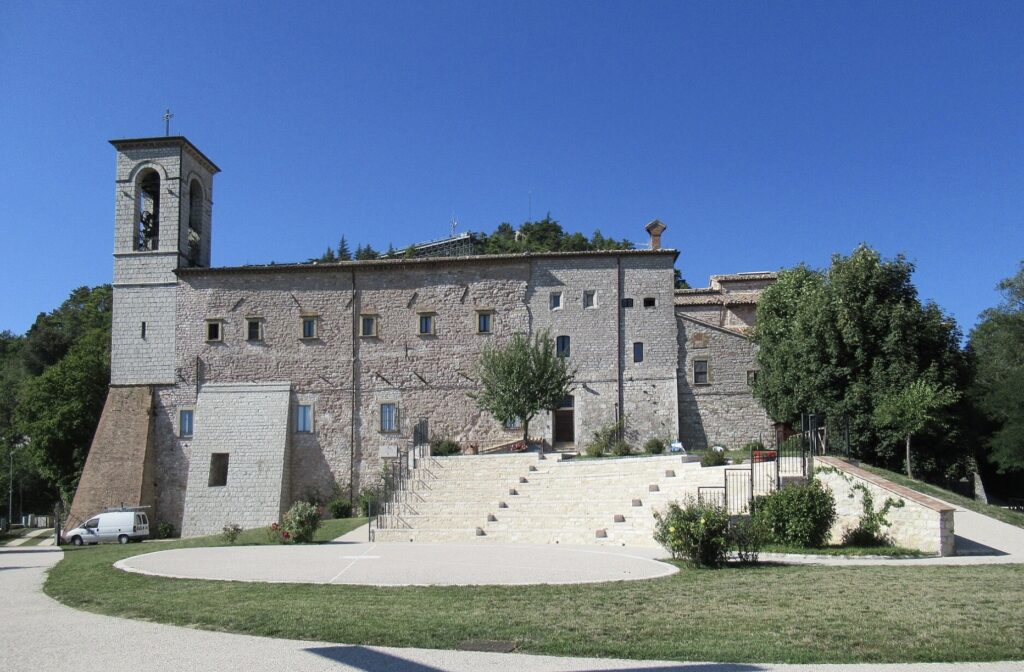
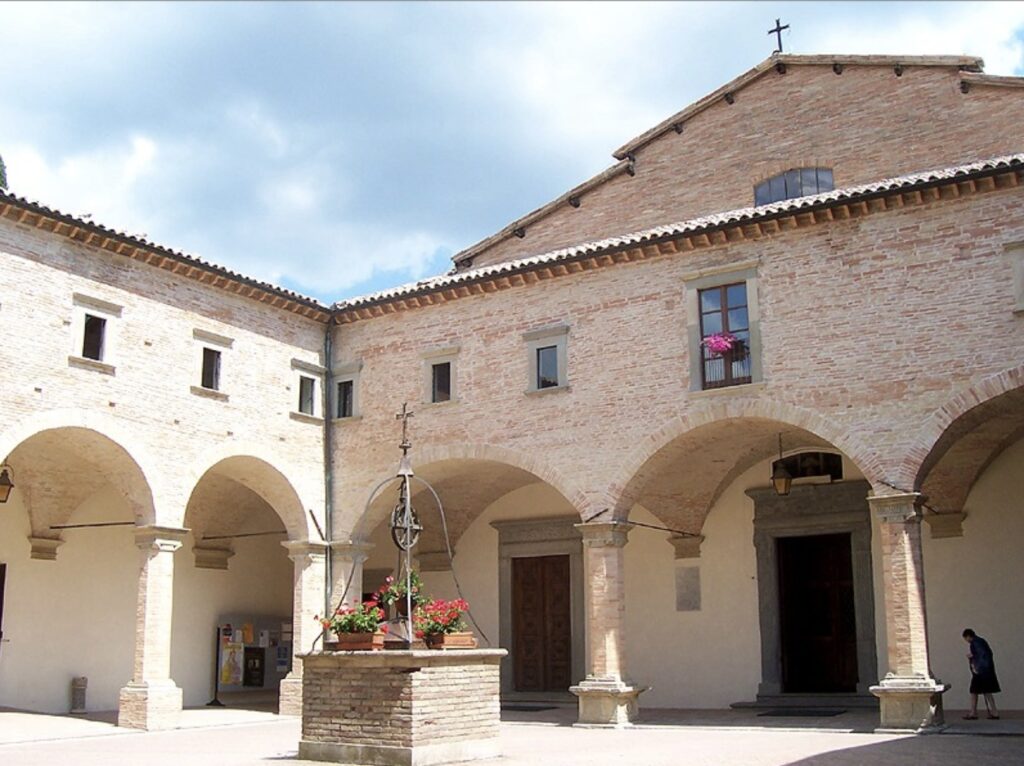
- Palazzo Ducale: A Renaissance palace built by Federico da Montefeltro, showcasing beautiful architecture and historical exhibits.
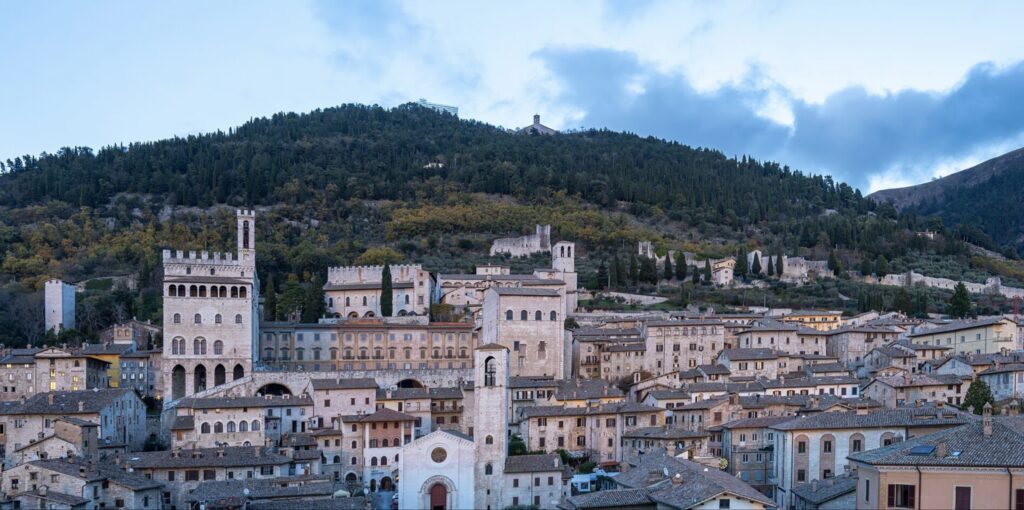
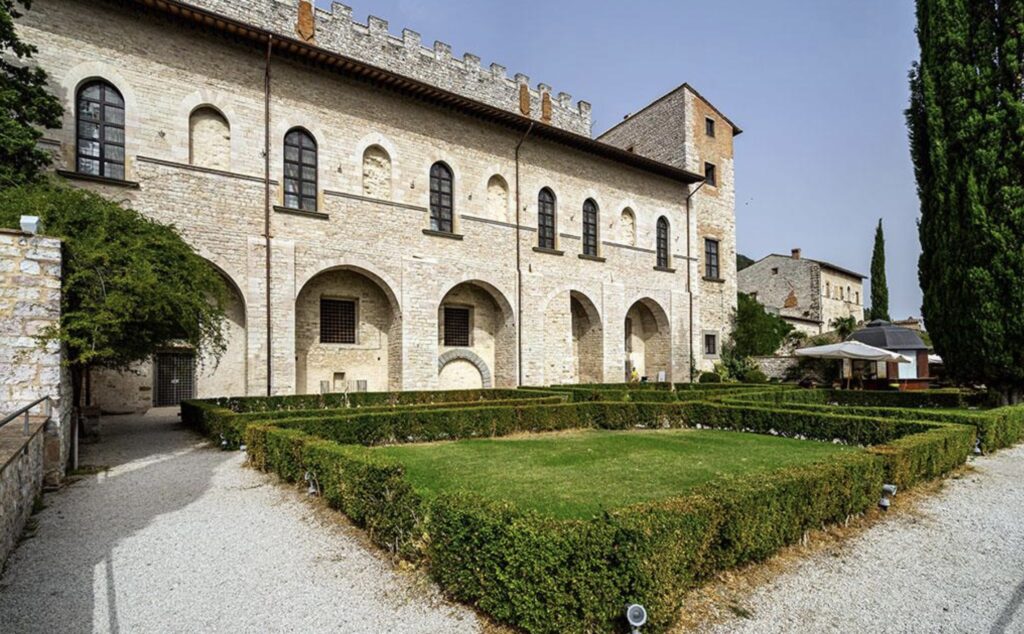
- Cathedral of Gubbio (Duomo di Gubbio): A Romanesque-Gothic cathedral dedicated to Saints Mariano and Giacomo, featuring impressive frescoes and artwork.
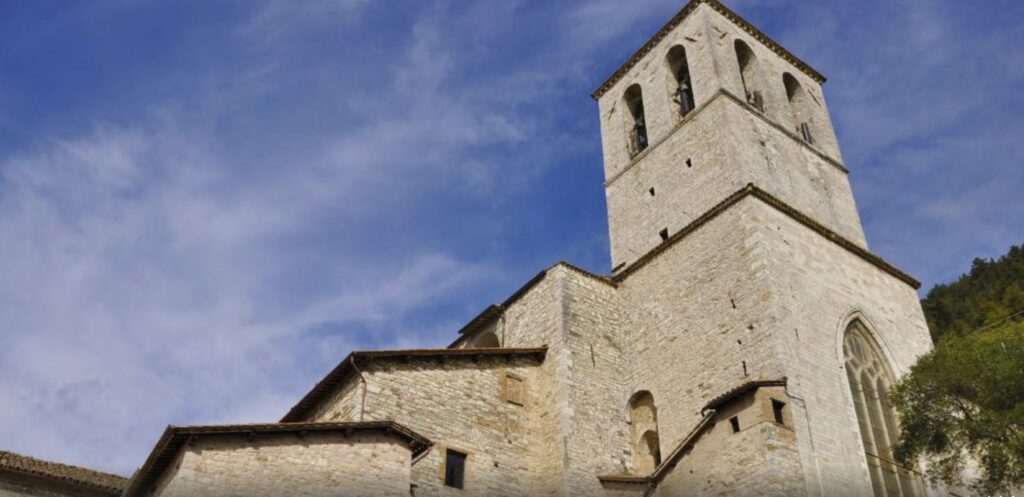
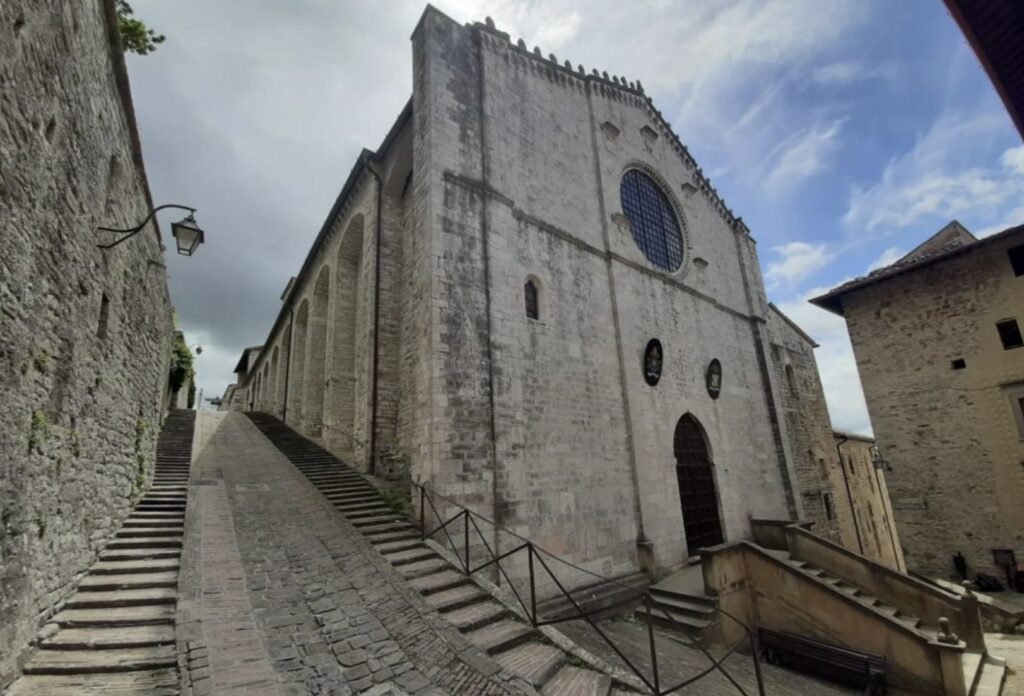
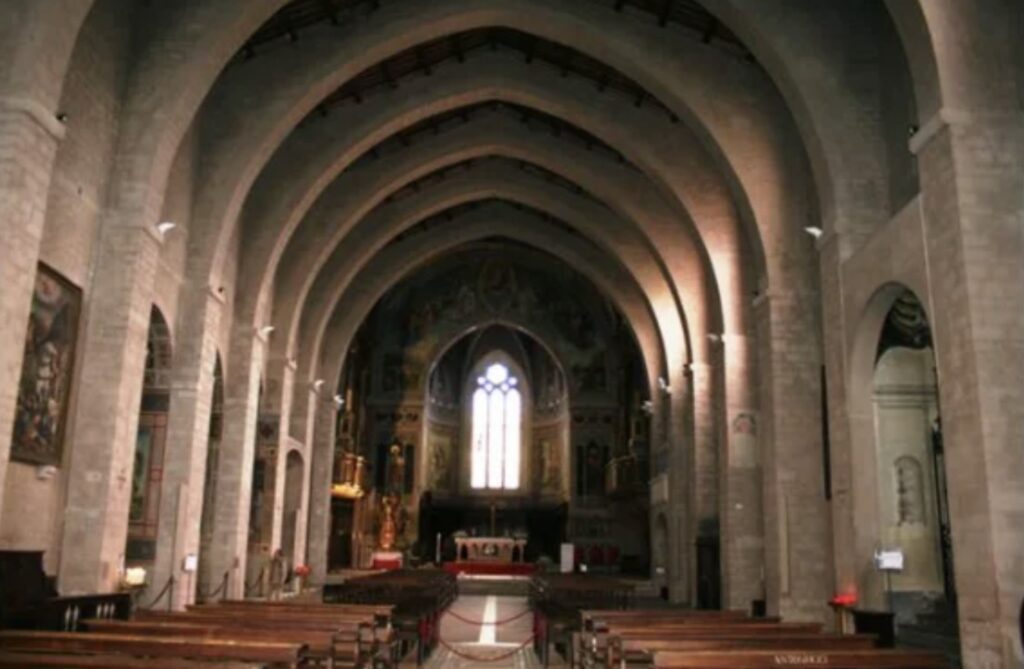
- Church of San Francesco: A Gothic church built in honor of St. Francis of Assisi, who visited Gubbio, known for its beautiful interior and serene ambiance.
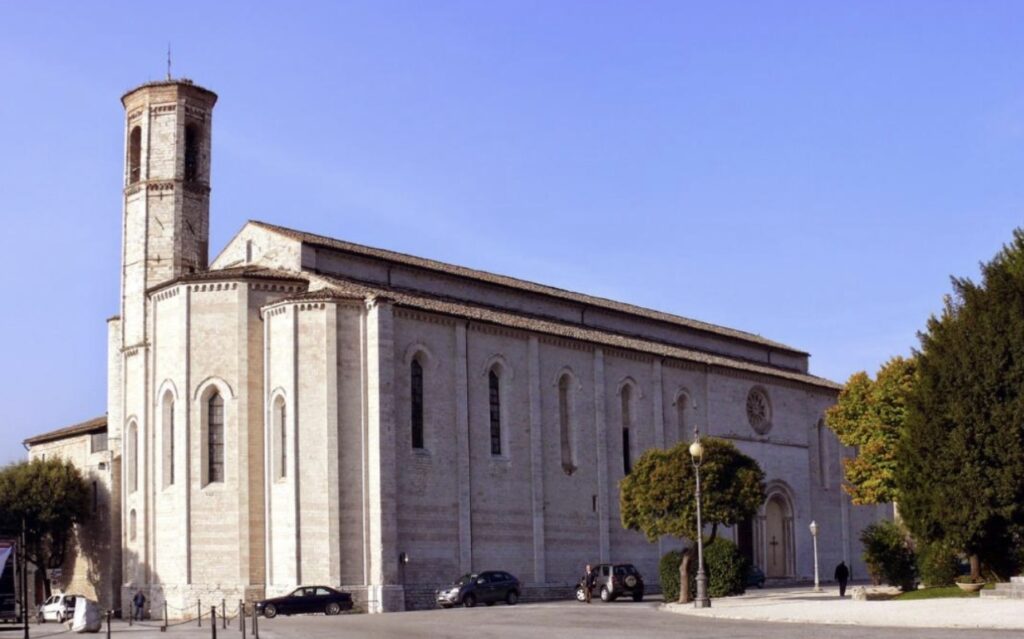
- Fountain of the Madmen (Fontana dei Matti): A unique fountain where visitors can take part in a local tradition to receive a “madman” certificate by running around it three times.
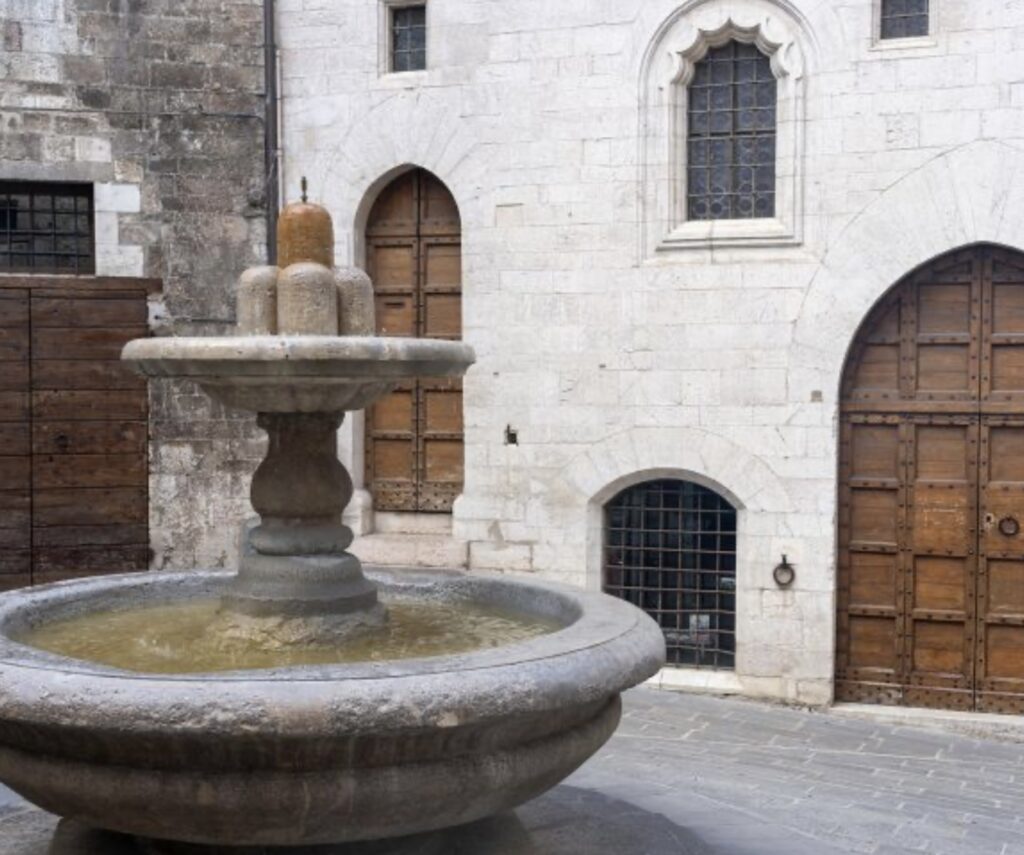
- Piazza Grande: A large, elevated square offering panoramic views of the surrounding countryside, often considered the heart of Gubbio.
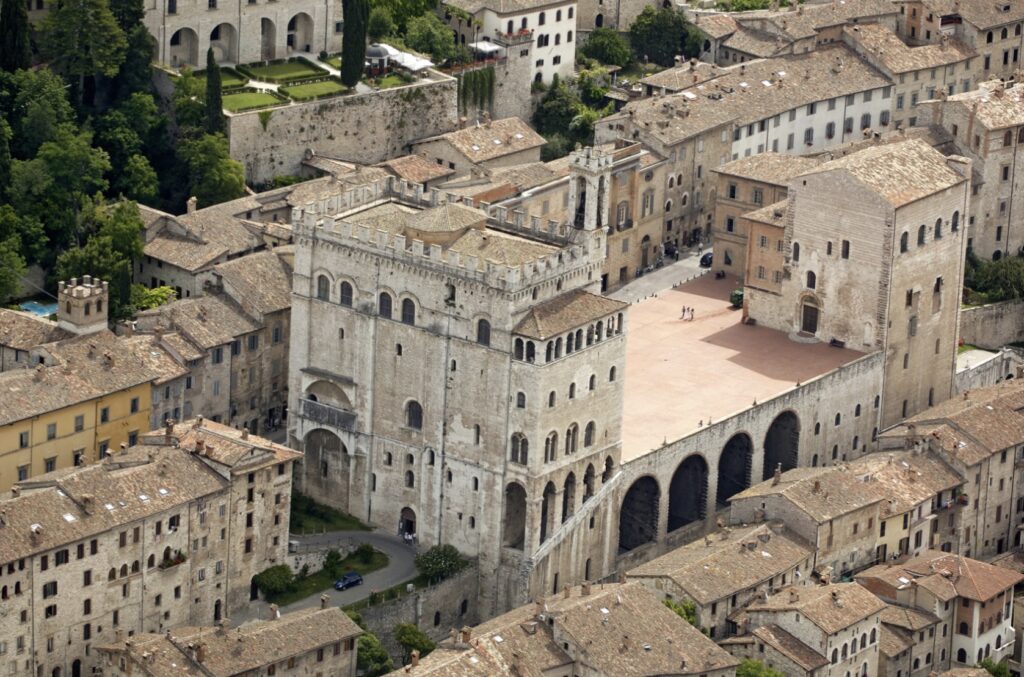
- Palazzo del Bargello: A medieval building housing a small museum and known for the adjacent Fountain of the Madmen.
- Church of San Giovanni: A Romanesque church notable for its striking bell tower and historic frescoes.
- Museum of the Porcelain of Gubbio: Showcasing the town’s tradition of ceramics and pottery, with beautiful pieces from various periods.
- Mount Ingino Cable Car: A scenic cable car ride to the top of Mount Ingino, offering breathtaking views and access to hiking trails.
These attractions provide visitors with a comprehensive experience of Gubbio’s historical and cultural significance.
Gubbio boasts several local food specialties that reflect its rich culinary tradition. Here are some notable dishes and products:
- Crescia di Gubbio: A type of flatbread similar to focaccia, often served with cured meats, cheeses, or local sausages.
- Torta al Testo: Another type of flatbread, typically cooked on a stone slab and served stuffed with various fillings like prosciutto, cheese, or greens.
- Cinghiale: Wild boar is a staple in Gubbio’s cuisine, often prepared in stews or ragù sauces and served with pasta or polenta.
- Tagliatelle al Tartufo: Fresh pasta served with a sauce made from the region’s renowned black truffles, a true delicacy.
- Brustengo: A traditional fried dough, often enjoyed as a snack or appetizer, sometimes topped with rosemary and salt.
- Fagioli con le Cotiche: A hearty bean soup made with pork rind, offering a rich and comforting flavor.
- Pecorino Cheese: Local sheep’s milk cheese, often aged and enjoyed as a part of an antipasto platter.
- Umbrian Sausages: Locally produced sausages, known for their distinctive flavor and high quality.
- Rocciata di Gubbio: A traditional dessert similar to a strudel, made with a pastry dough filled with apples, nuts, and spices.
These specialties highlight the rustic and flavorful nature of Umbrian cuisine, making Gubbio a great destination for food lovers.
Gubbio offers a variety of hiking trails that cater to different levels of difficulty, from easy walks to challenging hikes. Here are some suggestions:
Easy Trails
- Via della Costa
- Description: A gentle walk starting from Gubbio and winding through the countryside, offering beautiful views of the town and surrounding hills.
- Distance: Approximately 4 km round trip.
- Highlights: Scenic vistas, olive groves, and a leisurely pace suitable for all ages.
- Passeggiata del Parco Ranghiasci
- Description: A peaceful stroll through Parco Ranghiasci, a historic park near the town center.
- Distance: About 2 km.
- Highlights: Shaded paths, historic buildings, and a relaxing environment ideal for families.
Moderate Trails
- Sentiero del Monte Ingino
- Description: A moderately challenging trail leading to the Basilica of Sant’Ubaldo on Mount Ingino.
- Distance: Approximately 6 km round trip.
- Highlights: Panoramic views of Gubbio, the basilica, and the surrounding countryside. The trail includes both paved and unpaved sections.
- Circuito dei Castelli
- Description: A scenic loop trail that takes you through the countryside around Gubbio, passing by historic castles and ruins.
- Distance: About 10 km.
- Highlights: Medieval castles, rolling hills, and picturesque landscapes.
Challenging Trails
- Sentiero Francescano della Pace
- Description: A more demanding trail that follows the path believed to be taken by St. Francis of Assisi from Assisi to Gubbio.
- Distance: Approximately 50 km (can be done in segments).
- Highlights: Historical significance, diverse landscapes, and spiritual ambiance. This trail can be split into multiple sections for a multi-day hike.
- Sentiero del Monte Cucco
- Description: A challenging hike in the nearby Monte Cucco Regional Park, known for its dramatic scenery and varied terrain.
- Distance: Around 12-15 km depending on the chosen route.
- Highlights: Breathtaking views, limestone formations, and opportunities for caving and paragliding. This trail offers a more rugged and adventurous experience.
General Tips
- Check Weather Conditions: Always check the weather forecast before heading out, as conditions can change rapidly in mountainous areas.
- Wear Appropriate Gear: Wear sturdy hiking boots, carry sufficient water, snacks, and a map or GPS device.
- Local Guides: Consider hiring a local guide for challenging trails or if you’re unfamiliar with the area.
These trails provide a range of experiences, allowing you to explore the natural beauty and historical richness of the Gubbio region.
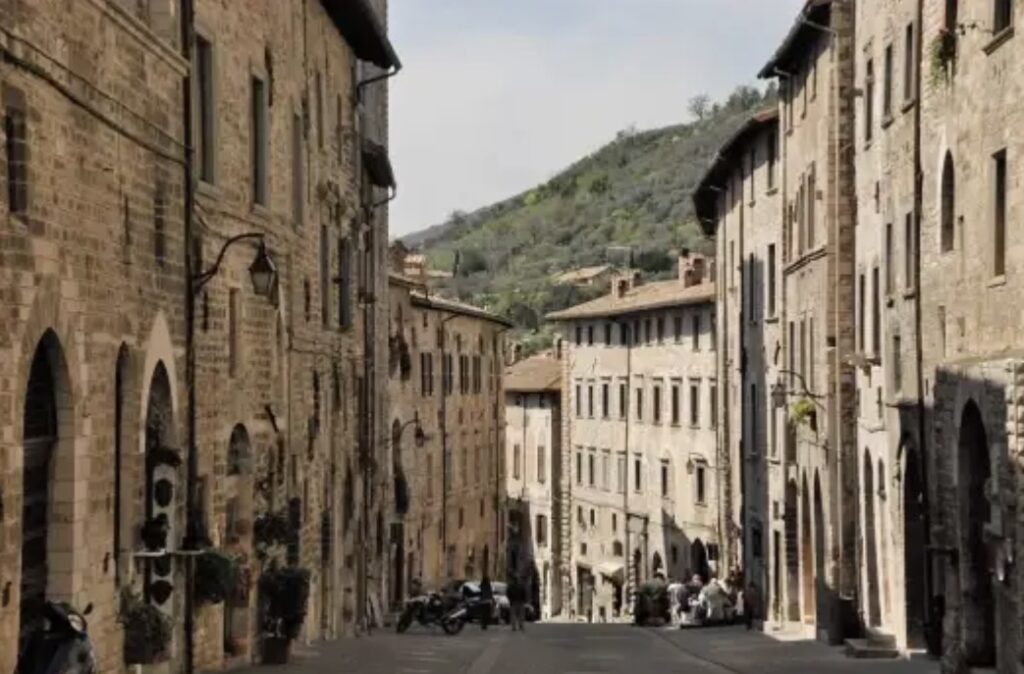
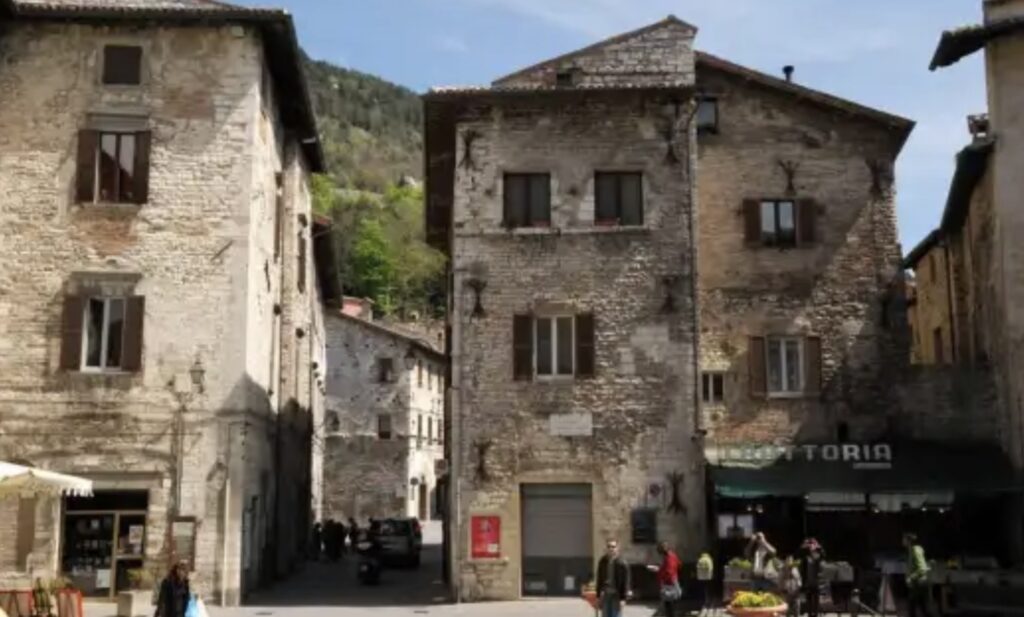
One-Day Itinerary for Visiting Gubbio
Morning
- Start at Piazza Grande: Begin your day at the heart of Gubbio, the elevated Piazza Grande. Enjoy the panoramic views and take in the historical ambiance.
- Palazzo dei Consoli: Visit this iconic Gothic building, home to the Civic Museum. Spend time exploring the museum’s exhibits, including the Iguvine Tablets.
- Roman Theatre: Walk to the nearby Roman Theatre, one of the best-preserved ancient Roman theaters in Italy. Take a moment to imagine the performances that once took place here.
Mid-Morning
- Cathedral of Gubbio (Duomo di Gubbio): Head to the Cathedral, located near the Palazzo Ducale. Admire its Romanesque-Gothic architecture and interior frescoes.
- Palazzo Ducale: Visit this Renaissance palace, built by Federico da Montefeltro. Explore its beautiful courtyards and historical exhibits.
Lunch
- Try Local Food at a Traditional Restaurant: Head to a local trattoria or osteria for lunch. Consider trying Tagliatelle al Tartufo, fresh pasta with a rich truffle sauce, or Crescia di Gubbio, a traditional flatbread with local cured meats and cheeses.
Afternoon
- Basilica of Sant’Ubaldo: After lunch, take the scenic cable car to the top of Mount Ingino to visit the Basilica of Sant’Ubaldo. Enjoy the stunning views of Gubbio and the surrounding countryside.
- Explore the Medieval Streets: Return to the town and wander through Gubbio’s narrow, cobblestone streets. Visit small shops and enjoy the medieval architecture.
Late Afternoon
- Church of San Francesco: Visit this Gothic church dedicated to St. Francis of Assisi, who once lived in Gubbio. Appreciate its serene interior and historic frescoes.
- Fountain of the Madmen (Fontana dei Matti): End your sightseeing with a visit to this unique fountain. Participate in the local tradition of running around it three times to receive a “madman” certificate.
Evening
- Dinner at a Local Restaurant: For dinner, choose another local specialty, such as Cinghiale (wild boar) or Fagioli con le Cotiche (bean soup with pork rind).
- Stroll and Gelato: Conclude your day with a leisurely evening stroll through the illuminated streets of Gubbio. Stop by a gelateria for some delicious Italian gelato.
Suggested Restaurants
- Taverna del Lupo: Known for its traditional Umbrian dishes and excellent truffle-based cuisine.
- Ristorante di Porta Tessenaca: Offers a variety of local specialties and a cozy ambiance.
- Osteria dei Re: Famous for its rustic atmosphere and delicious local fare, including wild boar dishes.
This itinerary ensures you experience the best of Gubbio’s historical sites, scenic views, and local culinary delights in a single day.
